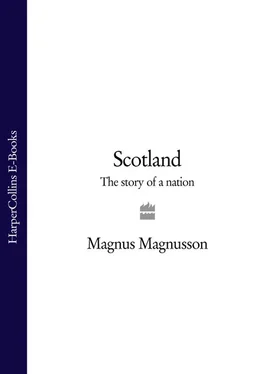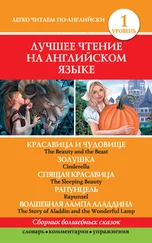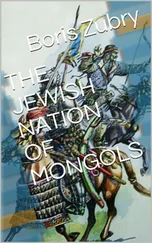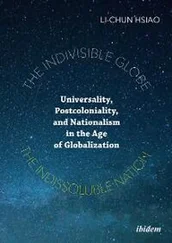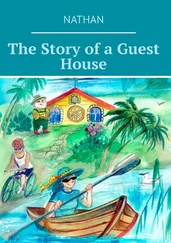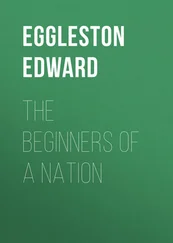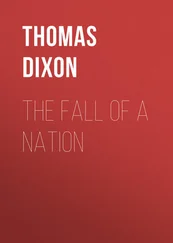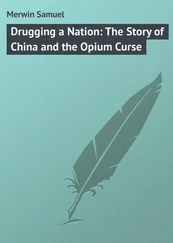1 ...6 7 8 10 11 12 ...20 Twenty-five years ago, archaeologists cleared the surface vegetation and revealed two concentric ramparts crowning the summit; these ramparts had been what is called ‘vitrified’ – that is to say, the timber framework inside the walls had been set on fire (deliberately or accidentally) so that the stone and earth of the massive ramparts were fused into a slaggy mass. The ramparts enclosed a flat expanse measuring some eighty metres by forty. When I was chairman of the Ancient Monuments Board for Scotland in the 1980s, we all toiled up to the top to admire the revelation of this great hill-fort, and decided there and then that Something Must Be Done to make this remarkable monument more accessible and comprehensible to the public; it was being used at the time as an obstacle course by trail riders and motorbike scramblers and the old ramparts were being undermined by the roots of invasive trees.
Well, Something Was Not Done – immediately. The whole summit is now overgrown with thistles and other tall plants. The commanding views of both the Beauly Firth to the north-west and the Moray Firth to the north-east are blocked by massive tree-growth. The ramparts are once again smothered by shrubs and undergrowth. Historic Scotland has plans to clear the summit and its ramparts once again, however, and people should soon be able not only to reach the summit with much greater ease but also to understand what is to be seen there.
Craig Phadrig was a major Pictish stronghold in the north of Scotland from the fifth century onwards. Towards the end of the sixth century it was the fastness of one of the most powerful kings named in the Pictish king-lists – King Bridei mac Máelchú, often called by the anglicised name of ‘Brude’. In his monumental A History of the English Church and People (c.731), the Venerable Bede described King Bridei as rex potentissimus , and he seems to have been the over-king of many local kingdoms which comprised the core of the realm of ‘Pictland’, or ‘Pictavia’; this realm extended from around the Firth of Forth and covered the centre and north-east of Scotland as far as Orkney (the name for the sea between Caithness and Orkney is the ‘Pentland’ Firth, which is a Norse word meaning ‘Pictland’). One of his ‘capitals’ may have been on Castle Hill in Inverness; and it is tempting to see Craig Phadrig as the place where St Columba (see below) may have met King Bridei during an expedition up the Great Glen to convert the northern Picts to Christianity in the latter half of the sixth century.
According to Columba’s biographer, Adomnán, King Bridei refused to open the heavy double gates of the ramparts to his missionary visitor. Columba then went up to the gates, made the sign of the cross against them and knocked; the bolts slid back of their own accord and the gates swung open – whereupon King Bridei ‘greatly honoured the holy and venerable man, as was fitting, with the highest esteem’.
So who were these people, these Picts? The first thing to recognise is that there was nothing ‘mysterious’ or ‘problematic’ about them, as scholars used to state. The Picts were not a new element in the population: ‘Picts’ ( ‘picti’ – painted ones) was simply the Roman nickname for the tribal descendants of the indigenous Iron Age tribes of northern Scotland. 1 Anna Ritchie, in Picts (Historic Scotland, 1989), puts it like this:
The Picts were Celts. Their ultimate ancestors were the people who built the great stone circles like Calanais on the Isle of Lewis in the third millennium BC in Neolithic times, and the brochs in the early Iron Age from about 600 BC to AD 200. We have no evidence of any major invasions of Scotland after the initial colonisation by farming peoples soon after 4000 BC – there seems to have been very little fresh blood coming in during the Bronze Age.
Just outside the town of Brechin, in Angus, by the A90 trunk road from Dundee to Aberdeen, an impressive £1.2 million visitor centre was opened in the summer of 1999 in the country park of the Brechin Castle Centre. It is called Pictavia , and can be described as somewhere between a museum and a theme park. The display tells, vividly and graphically, the story of the Picts, and is a splendid introduction to their world for visitors of all ages and abilities; it includes not only many examples of Pictish stones and jewellery but also interactive computer facilities explaining the meanings of Pictish symbols (‘Cyber Symbols’) and the sounds of Pictish music (the ‘Tower of Sound’).
Some time after the age of King Bridei, of Craig Phadrig fame, the centre of Pictish power moved southward, to Angus, Perthshire and Fife, but the Picts’ distinctive culture did not change. They were not by any means the painted barbarians described by Roman chroniclers; on the contrary, they were a cultured society ruled by a sophisticated warrior aristocracy which could afford to employ learned men and, more particularly, craftsmen of all kinds – particularly the sculptors who fashioned the magnificent carved stones which are the unique legacy of the Picts.
This period of early Scottish history has long been known as the ‘Dark Ages’, not because the deeds of the time were so dark but because the documentary sources are too meagre to shed a great deal of light. Modern historians prefer to call the ‘Dark Age’ of Scotland by a less misleading name – ‘Early Medieval’. What is clear is that it was a time of considerable and rapid political and ethnic change. By pulling together the sometimes elusive accounts of medieval chroniclers, and calling in all the available archaeological evidence, it is now possible to see various historical patterns developing in Scotland, both north and south of the Forth – Clyde line.
In our attempt to understand the changing shape of early Scotland it would be enormously useful to be able to call upon the aid of television, with its graphic use of ‘morphing’ – merging collages of images into one another, like long-range weather forecasts. The pattern of conquests and occupations in Scotland in the centuries succeeding the Roman withdrawal presents a confusing kaleidoscope of shifts in power, like an ever-changing jigsaw puzzle. Before we reach a more stable picture of ‘Scotland’ in the twelfth century, say (the time of David I – see Chapter 6), we have to follow the fortunes of several apparently different groupings: Picts, Gododdin, Angles, Britons/Celts and Scoti/Scots/Gaels, as well as specific kingdoms like Pictland, Fortriu, Strathclyde, Rheged, Alba and ultimately Scotia.
While the Picts were the power in the north, another martial kingdom had been developing to the south of the Firth of Forth, in the Lothians – the home of the British tribe known to the Romans as Votadini. During the Roman occupation they had been a client kingdom, or at least had lived peaceably under Roman subjugation; archaeologists have found a major hoard of rather battered Roman silverware which was buried at Traprain Law in the fifth century, after the Roman withdrawal.
By 600, however, the Votadini had their stronghold in Edinburgh (Din Eidyn), and emerged in history under their proper British, or Old Welsh, name of ‘Gododdin’ in an elegiac heroic poem called Y Gododdin , composed by a local bard named Aneirin at about that time. The poem tells the story of a raiding expedition mounted by the king of the Gododdin, Mynyddawg Mwynfawr, who ruled territories stretching from the Forth to the Tees. He gathered a princely war-band of 360 chosen champions from all over his realm and even farther afield. For a year they feasted and caroused in the towering timber hall of his stronghold in Edinburgh, wearing robes of purple and gold, with gold brooches and neck-bands, drinking from goblets of gold or silver. Then they pledged themselves, according to ancient custom, to conquer or die in the service of their lord. Next morning they went clattering down the Castle Rock, riding southward deep into the lands of the Angles. The encounter took place at ‘Catraeth’, identified as Catterick in what is now Yorkshire:
Читать дальше
